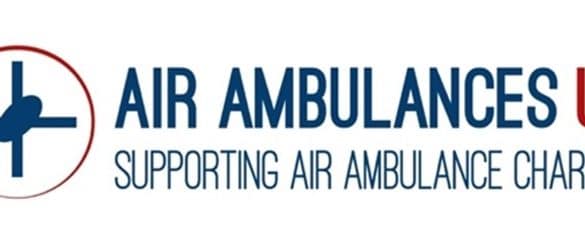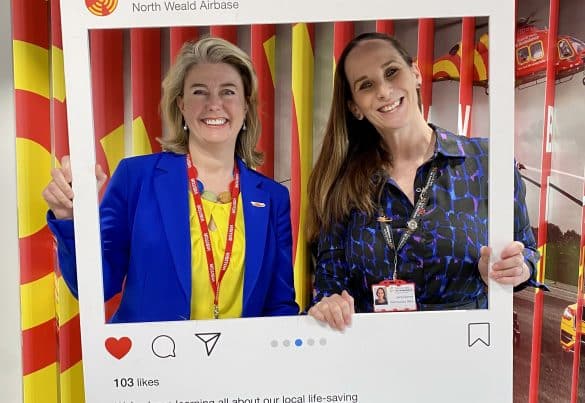A Day in the Life of a Student Observer
SHARE
Here at Essex & Herts Air Ambulance we invite applications from medical and paramedical electives to join our team.
Joining us, students gain exposure to some of the most driven and talented doctors and paramedics practicing in pre-hospital care in the UK today, and the opportunity to immerse themselves in our clinical operation and academic programme.
We take a maximum of 4 students at a time for a minimum of 4 and a maximum of 6 weeks.
Oliver Barker, 25, final year King’s College London medical student tells us more…
How do you apply?
Information on how to apply is easily available on the EHAAT website, and I sent a query more than a year in advance of my eventual placement. Applying early is essential as placements are both in high demand and limited in places.
I was asked to submit a CV with covering letter, which was a little alien having not needed one for some years and having actually not had any emergency experience at that time, but the team responded very quickly to confirm my placement.
Although A&E experience is desirable, the team understand that not all curriculums will mean that exposure has happened when you apply, but they do expect that you have a demonstrable clinical interest. Emails are responded to promptly and they are happy to help with queries, for example as the EHAAT bases are not local to me they put me in touch with previous students regarding potential travel and accommodation arrangements.
What did I expect to learn?
On reflection, I’m not sure if I ever envisaged having such a fantastic experience. The nature of the service means they will attend life-threatening emergencies during any placement. These missions stretch resources, skills and knowledge, and I hoped to learn about this first hand with the aim to improve my future clinical practice and decision making.
It was difficult to imagine how a medical student could be utilised and incorporated into the team, and I expected to be very much in the background as may be usual for students during in-hospital emergencies. Although you are applying to be an observer, the EHAAT website has a clear booklet of student topics that they expect you to cover during your placement, and this gave me the reassurance that the time would be beneficial regardless.
Of course exciting helicopter rides are important, and you should expect to have roughly 6 flying shifts over a 4 week period.
What was it actually like?
Day one was frankly a shock; never before have I arrived on the first day to be met by 20-30 strangers who, over a cup of tea, all stopped to take an interest in me and to introduce themselves. I quickly felt part of the team.
The first few days typically consist of meeting the team, some relaxed teaching, vehicle safety briefings, familiarisation with the kit, and getting stuck in with a research project.
The research projects are relaxed, normally manifesting as a presentation or poster, and are focussed around an area of pre-hospital care that can potentially influence future patient treatment, and also reflect an interest of your own.
Your first flying shift is an adrenaline filled day with an early start, a swift helicopter flight, a rush to the patient’s side and then attempting to not get in the way and to be useful. These feelings are transient though, and the team excel at crew resource management (CRM) to utilise your skills, and as your relationship develops those responsibilities will increase.
Although experiences are entirely case dependent, expect to be carrying kit and transferring patients at a minimum. Do not forget that being in the team also means you will be expected to muck in with all aspects, such as cleaning the helicopter, but do not begrudge this as they are all experiences you will never forget.
The team work extremely closely with the ambulance service, and an enhanced understanding and respect of their work is a guarantee. All cases are debriefed offering a further learning experience, a welcome environment to ask questions and to share your feelings whilst they are still fresh in your mind.
You will see cases that move you, those that make you feel out of your depth, and completely unexpected scenarios. Unfortunately there are those who do not survive, but expect to feel proud that all patients receive an exceedingly high standard of care, and that you were part of the team who provided it.
Who should apply?
If you are looking to further your knowledge in pre-hospital care, enjoy working within a team, and are prepared to get stuck into all aspects of base life then this is for you.
The perpetual advice passed between each group of students are 1) If in doubt brew a pot of tea, 2) always carry the heaviest pack and 3) engross yourself in the world of EHAAT as a provider of pre-hospital care and as a charity. As an aside, helicopters do make for great photos!
I will never forget my experiences with the team, and would jump at the opportunity to work alongside such an exceptional group again, performing an essential and rewarding job that makes a real difference to patient outcomes. What EHAAT offers is truly remarkable, and in addition their achievements as a non-government funded Charity are astonishing. Even if you read this article and think it is not a career for you, please do support your local HEMS charity to ensure their work can continue.
Join our mailing list
Join the community and recieve all the latest news and updates straight to your inbox.






